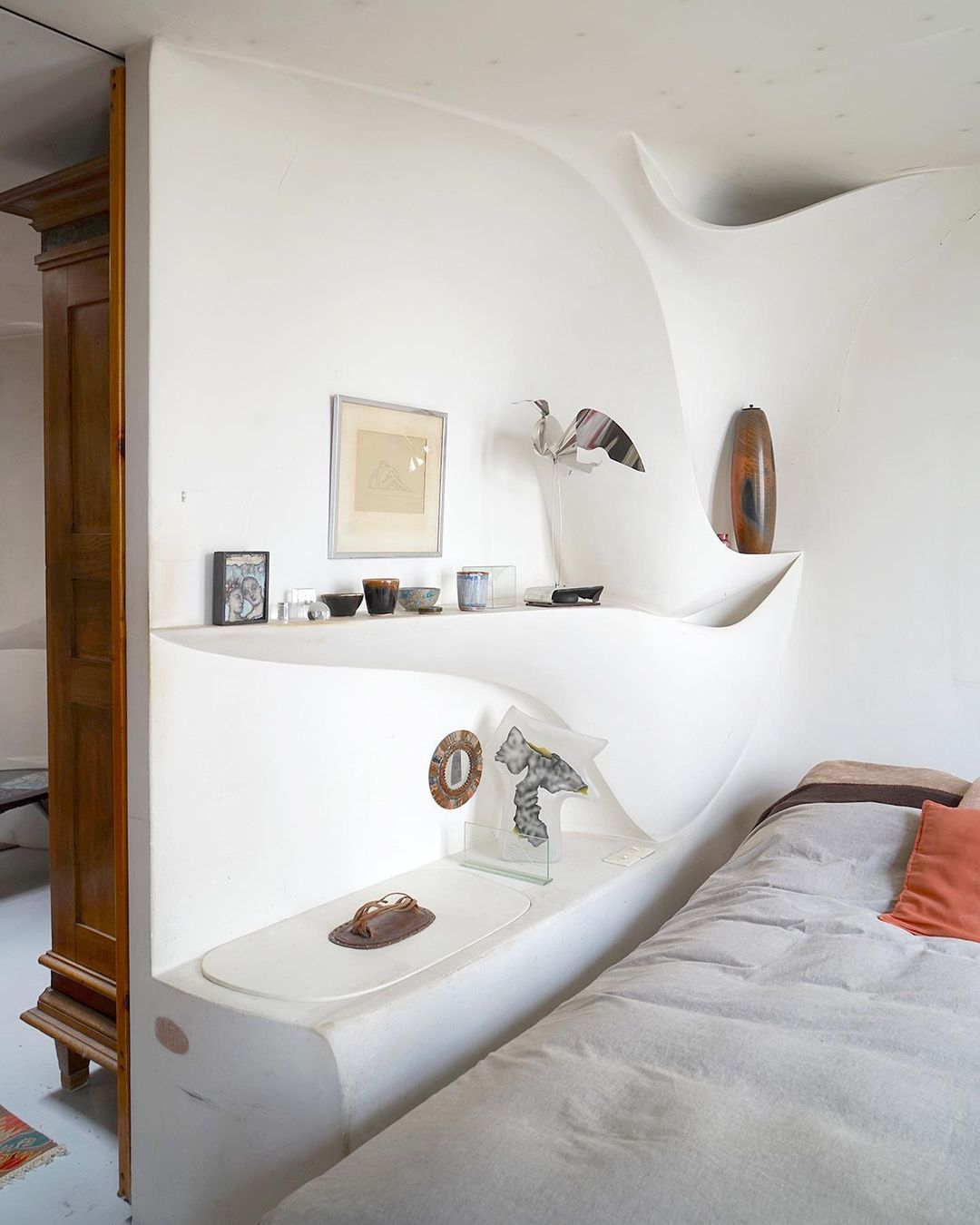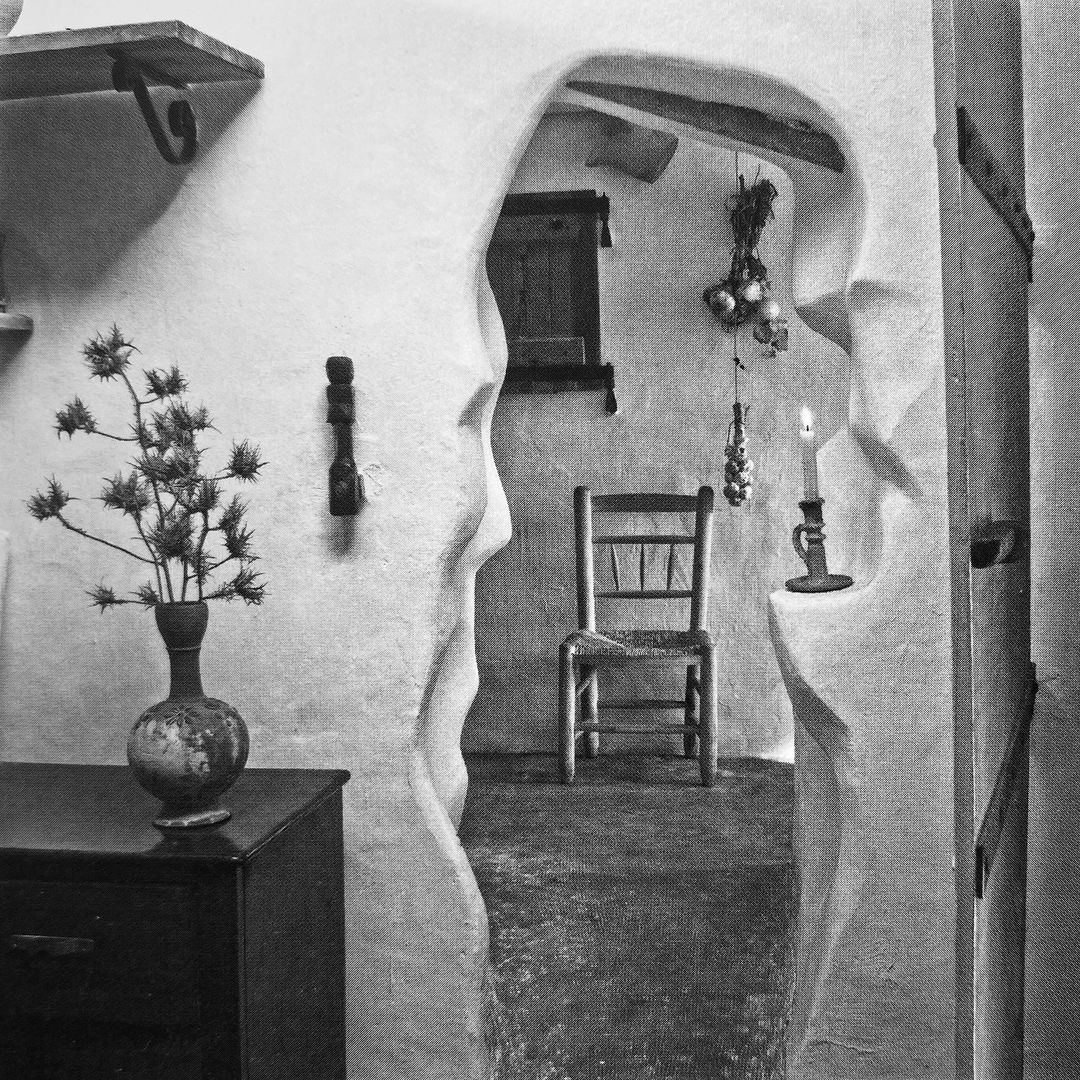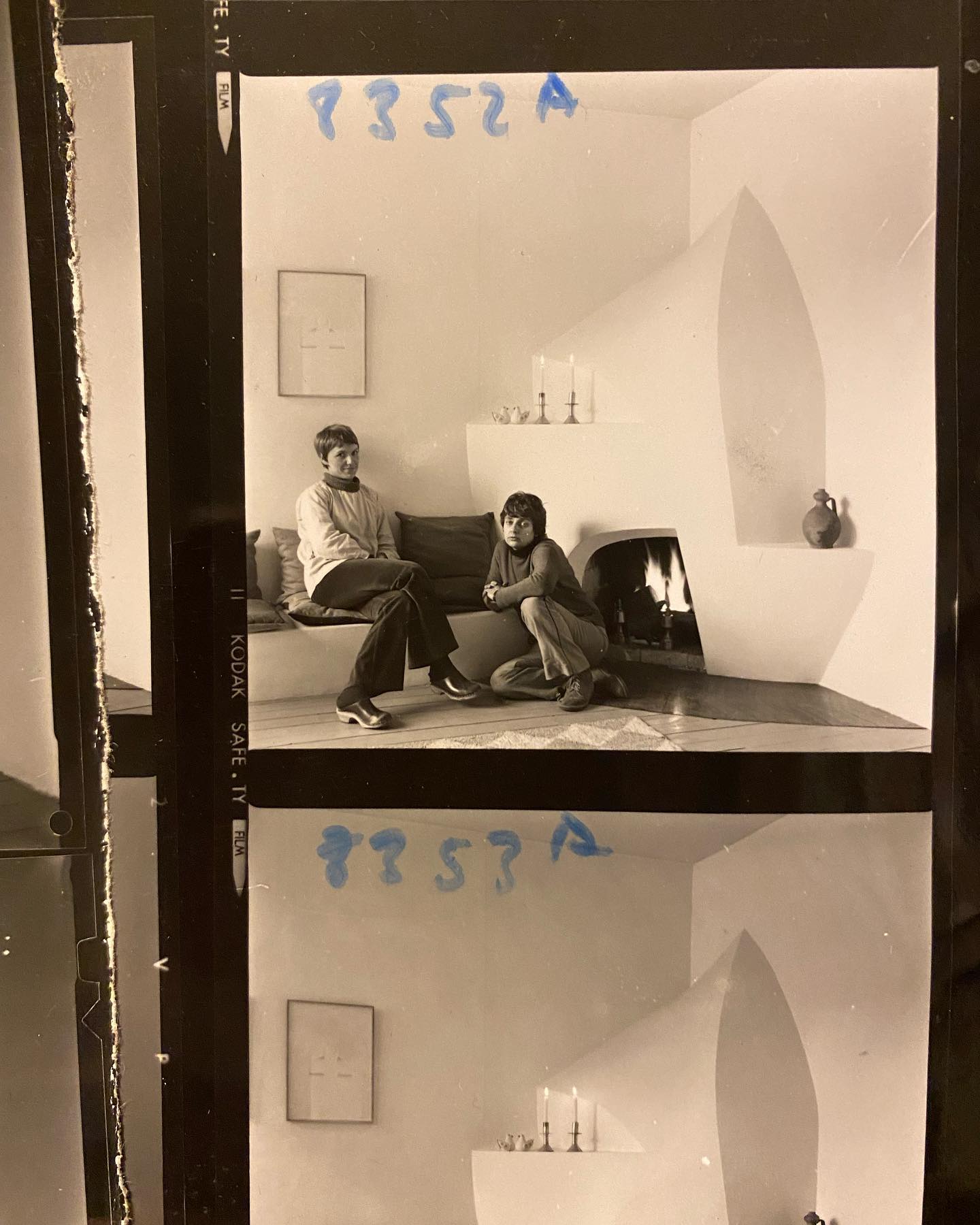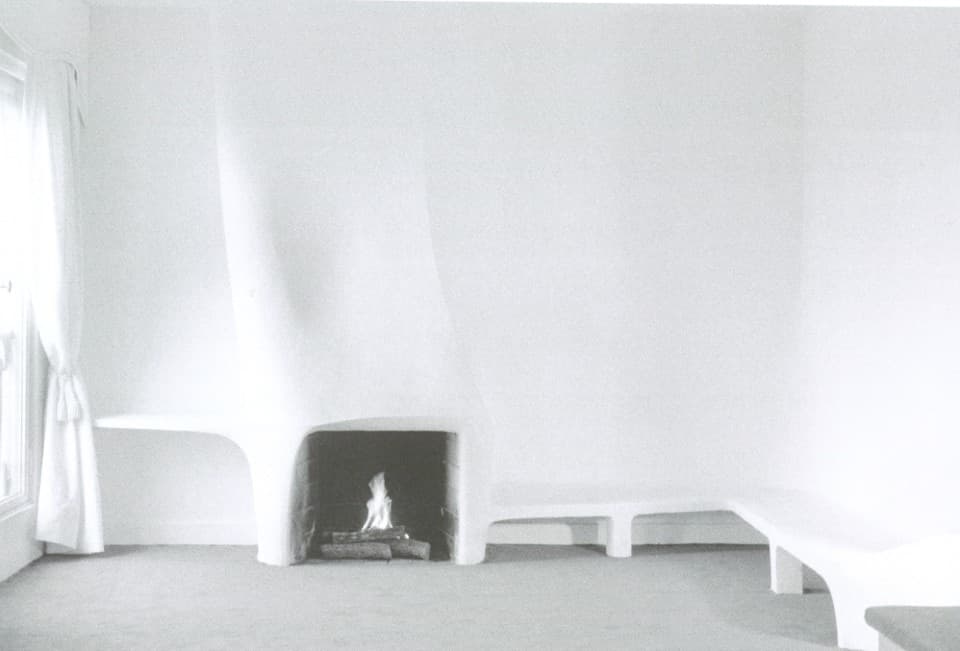Obsessions: Valentine Schlegel’s Home as Living Canvas

1976. Photo: Hélène Bertin, 2017
This season we have been casting our focus on one of the 20th century’s most intriguing, yet less known ceramicists, Valentine Schlegel—and the ways the French artist’s interdisciplinary practice reimagined utilitarian & everyday objects with fluidity and sensuality.

Image c/o Sight Unseen: "Ceramic Fireplaces and Leather Doors: Inside the Paris Atelier and Home of Valentine Schlegel" by Adam Štěch, 2023.

Valentine Schlegel, Paris, 1972. Photo courtesy of Suzanne Fournier-Schlegel
Known for her sculpture and ceramics, Valentine Schlegel (1925-2021) worked between Paris and Séte, raised in a family of artisans before studying drawing and painting; working as a costume designer; and eventually discovering her love of ceramics in the 1940s, with a style influenced by ancient Mediterranean ceramic tradition that employed plaster casts to organic form. “I like the exceptional everyday,” she once said, and her work is a reminder of the ways small details can hold just as big an impact as large-scale blockbusters.

Photo: Hélène Bertin, 2017
Translated through her sculptural eye, even the most quotidian objects took on a graceful softness—from wooden flatware to ceramic vases, leather bags to fireplaces. The latter came about after selling a vase to friends in the late 1950s. While looking for a place to display it in their home, she realized that the fireplace was frustratingly ugly and a missed opportunity for it to serve an aesthetic function as well as a practical one. As a solution, Schlegel crafted a plaster covering to place over the original structure, which evolved into a design niche she’d go onto explore for the next half-century. Across 100 or so fireplaces, she reimagined their use with aesthetic cleverness, stocking the forms with shelves, storage compartments, and benches that allowed for year-round use.

Atelier de Valentine. Photo: Suzanne Fournier-Schlegel, 1963

Valentine sitting on the ground, in front of one of her fireplaces. Archive of Valentine / photo @charlottecg, March 2022
While much of Schelegel’s legacy is lesser known—largely because she worked in immovable spaces and interiors–luckily much was documented in image, the rich archives of which are worth exploring. In particular, Schlegel’ apartment & workshop in Paris’ 14th arrondissement, where she lived until her death at the age of 96, exemplifies her philosophy in practice. Across the space, this fluidity between function and form is evident at every turn; it’s an inspiring reminder of the possibilities that unfold when we look a little closer, considering the everyday as our greatest source material.

Fireplace, Paris, circa 1961. Photo courtesy of Suzanne Fournier-Schlegel
Places to continue the inspiration:
To browse — An Instagram account of archival imagery, created by Schlegel’s neighbor
To explore — The show “This Woman Could Sleep in Water” curated by Hélène Bertin